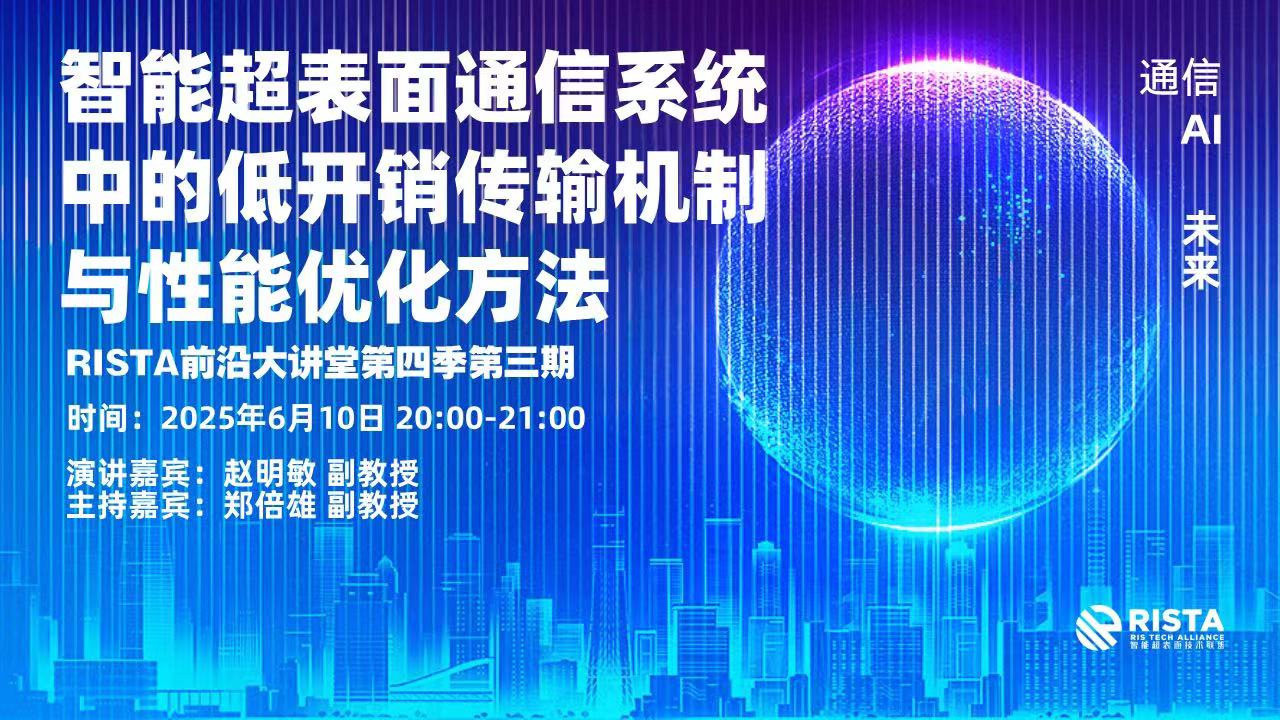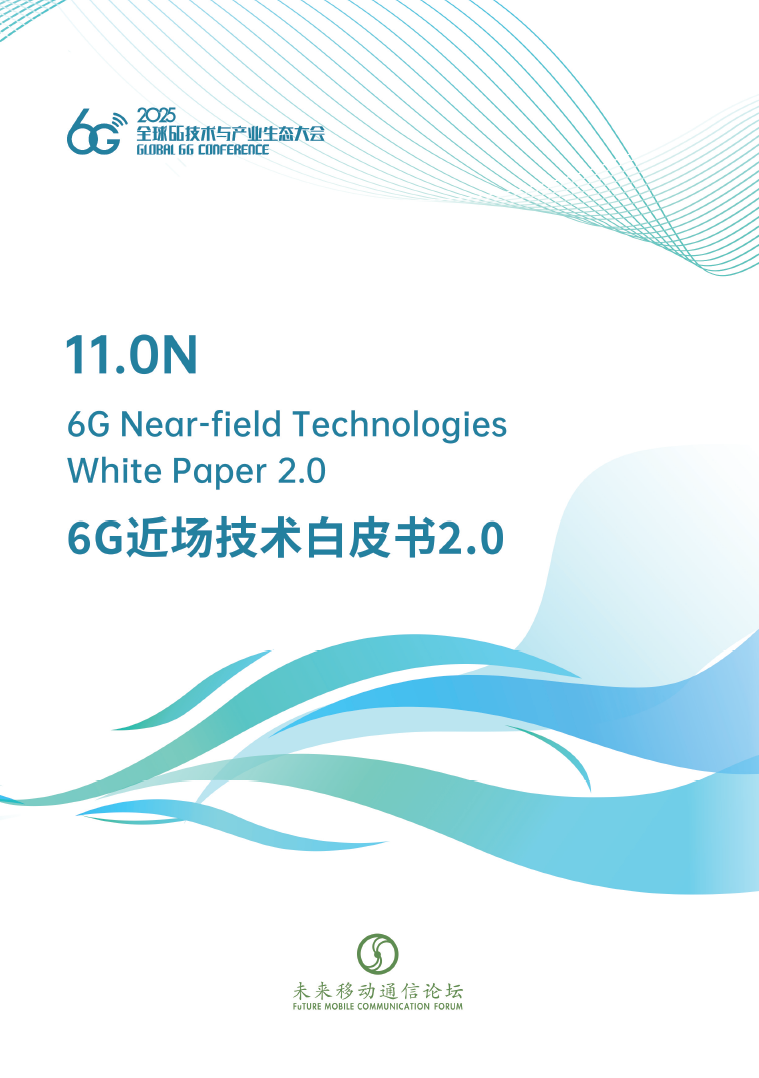
传统无线通信系统已经充分挖掘和利用远场空间资源,进一步探索和利用近场资源,有望为无线通信系统提供新的物理空间维度。未来6G网络中将会配置更大的天线孔径,并将使用中频段、毫米波、太赫兹等更高频段,这将使得近场特性更加显著。同时,智能超表面(Reconfigurable Intelligent Surface, RIS)、超大规模MIMO、去蜂窝(Cell-free)等新技术的引入,使得未来无线网络中近场场景广泛存在。近场通信技术也是实现未来6G网络更高的数据速率要求、高精度的感知需求及物联网无线传能需求等的使能技术之一,有机会成为未来6G潜在无线空口关键技术之一。近年来,近场通信技术已取得一定进展,但其基础理论研究尚不够完善,关键技术研究尚有待突破,工程应用研究也面临诸多挑战。
为促进学术界和工业界对近场通信相关基础机理、共性关键技术和工程化应用的理解,引导和推动该领域的研究,中国工程院院刊《信息与电子工程前沿(英文)》(FITEE)邀请张平院士担任主编,筹备“近场通信理论及应用”专题。专题将围绕(但不限于)以下主题征稿:
l 近场电磁信息理论与电磁模型
l 近场通信的球面波信号模型
l 近场信道测量与建模
l 近场信道估计与反馈
l 近场模拟与数字波束赋形
l 近场码本设计
l 近场多址接入技术和资源分配策略
l 基于人工智能/机器学习的近场设计和处理
l 用于近场的智能超表面设计
l 用于近场的天线设计
l 高频毫米波与太赫兹频段的近场研究
l 宽带毫米波与太赫兹系统的近场波束斜视和波束分裂补偿
l 基于近场的定位、感知和通感一体化
l 近场无线传能
l 基于近场的轨道角动量
l 近场物联网应用
l 近场网络架构与部署
l 近场标准协议设计
l 远近混合场
l 近场原型实现与测量
欢迎综述、研究、观点(Perspective)等类型稿件。为推动国际合作,特别鼓励中国学者与国外学者合作撰稿。
主编:
张平,院士,北京邮电大学
执行主编:
赵亚军,总工,中兴通讯
戴凌龙,教授,清华大学
Marco Di Renzo,教授,Paris-Saclay Univ.(法国)
编委(按姓氏字母序):
陈智,教授,电子科技大学
Zhiguo Ding,教授,Khalifa Univ.(阿联酋)
黄崇文,教授,浙江大学
李龙,教授,西安电子科技大学
Yuanwei Liu,副教授,Queen Mary Univ.(英国)
张建华,教授,北京邮电大学
Xingqi Zhang,教授,Univ. Alberta(加拿大)
重要时间点:
截稿:2024年5月10日2024年3月1日
录用:2024年8月10日2024年5月31日
来稿请用英文撰写;可接受Word或LaTeX格式投稿。如用Word,建议采用通栏、1.5倍行距、10.5pt字号、新罗马字体;如用LaTex,请使用模板:http://www.jzus.zju.edu.cn/download/FITEE_LaTex_template.zip。
作者指南,详见https://www.fitee.zjujournals.com/en/aboutus/8550/
在线投稿:https://www.editorialmanager.com/zusc/(请选择文章类型:S.I.-NFC)
赵亚军,zhao.yajun1@zte.com.cn
戴凌龙,daill@tsinghua.edu.cn
编辑部:jzus_zzy@zju.edu.cn,+86-571-88273162
Near-Field Communications Theories and Applications
(Submission by May 10, 2024)
Wireless communication systems extensively utilize far-field spatial resources. However, with the advent of 6G networks, it is important to explore and utilize near-field resources, as they can provide new physical spatial dimensions for wireless communication systems. The use of higher frequency bands (including mid-band, millimeter wave, and terahertz), reconfigurable intelligent surface (RIS), ultra-massive MIMO, cell-free networks in future 6G wireless communications will make near-field characteristics more significant. Near-field communication is expected to be a key enabler for achieving improved spectrum efficiency, higher data rates, high-precision sensing and localization, and wireless power transfer.
To promote deeper understanding of the foundational mechanisms, common key technologies, and engineering applications of near-field communications, Frontiers of Information Technology & Electronic Engineering (FITEE) is launching a special feature on “Near-Field Communications Theories and Applications.” Prof. Ping Zhang, an academician of the Chinese Academy of Engineering, will serve as the Editor-in-Chief. We invite papers on the following topics (but not limited to):
-
Near-field electromagnetic information theory and electromagnetic modeling
-
Spherical wave signal model for near-field communications
-
Near-field channel measurement and modeling
-
Near-field channel estimation and feedback
-
Analog and digital beamforming for near-field communications
-
Codebook design for near-field communications
-
Multiple access technology and resource allocation strategy for near-field communications
-
AI/ML-based design and processing for near-field communications
-
Reconfigurable intelligent surface design for near-field communications
-
Antenna design for near-field applications
-
Near-field communications in U6G/millimeter-wave/terahertz bands
-
Compensation techniques for beam squint and beam split in broadband millimeter wave and THz systems
-
Near-field positioning, sensing, and ISAC
-
Near-field wireless power transfer
-
Orbit angular momentum (OAM) based on near-field communications
-
Near-field communications for IoT applications
-
Network architecture and deployment for near-field communications
-
Standard protocol design for near-field communications
-
Hybrid far- and near-field communications
-
Prototype implementation and measurement of near-field communication systems
Editorial Board
Prof. Ping Zhang, Beijing Univ. Posts and Telecommunications, China
Executive Lead Editors:
C.E. Yajun Zhao, ZTE Corp., China
Prof. Linglong Dai, Tsinghua Univ., China
Prof. Marco Di Renzo, Paris-Saclay Univ., France
Editors (in alphabetical order by last name):
Prof. Zhi Chen, Univ. Electronic Science and Technology, China
Prof. Zhiguo Ding, Khalifa Univ., UAE
Prof. Chongwen Huang, Zhejiang Univ., China
Prof. Long Li, Xidian Univ., China
A.P. Yuanwei Liu, Queen Mary Univ. London, UK
Prof. Jianhua Zhang, Beijing Univ. Posts and Telecommunications, China
Prof. Xingqi Zhang, Univ. Alberta, Canada
All submitted manuscripts must be written in English and must not be under consideration elsewhere for publication. Guidelines for authors are available at https://www.fitee.zjujournals.com/en/aboutus/8550/. Either Word or LaTeX format is acceptable. When Word is used, the layout of the text should be in single column, 1.5 lines spacing, 10.5 pt font size, and Times New Roman font. A template is available at http://www.jzus.zju.edu.cn/download/FITEE_LaTex_template.zip. Manuscripts should be submitted via https://www.editorialmanager.com/zusc/ under the article type “S.I. – NFC”.
Important Dates
Manuscript submission by May 10, 2024
Acceptance notification by Aug. 10, 2024
Publication date: Sept.-Oct., 2024
Introduction to FITEE
FITEE is a peer-reviewed journal launched by the Chinese Academy of Engineering (CAE) and Zhejiang University, and co-published by Springer & Zhejiang University Press. It is SCI-E indexed, with an IF of 3.0 (2022 JCR). FITEE aims to publish the latest implementation of applications, principles, and algorithms in the broad area of Electrical and Electronic Engineering. All articles will undergo international peer review and crosscheck processes before they are accepted to ensure high quality.
For inquiries regarding this special issue, please contact:
C.E. Yajun Zhao, zhao.yajun1@zte.com.cn
Prof. Linglong Dai, daill@tsinghua.edu.cn
Editorial Office, Ziyang Zhai (managing editor), jzus_zzy@zju.edu.cn, +86-571-88273162





